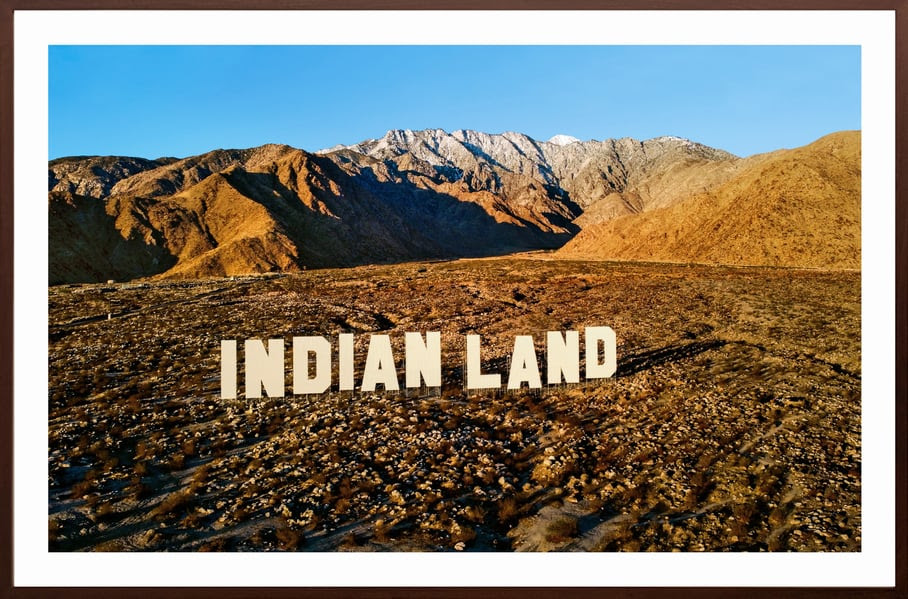
- Details
- By Native News Online Staff
Running through December 21, 2025, the exhibition features over 100 works by nearly 100 Native artists from over 50 Indigenous nations across the United States, highlighting the diversity and vibrancy of Native identity.
Smith, a member of the Confederated Salish and Kootenai Nation, has been a major figure in Native American art for over 40 years. With Indigenous Identities, she aims to change the way people see Native art, bringing it into a contemporary light.
“For years, the media has portrayed us as a vanishing race, and museums historically have ignored us,” Smith said in a press release. “My hope with exhibitions like this one is to place Native Americans firmly in the present and in every possible future.”
Smith is known for her own impactful art, often using humor and satire to question stereotypes and explore Native life. Her work is displayed in top museums like the Smithsonian and the Whitney, and she has organized over 30 exhibitions of Native American art.
The exhibit showcases various forms of art, including beadwork, ceramics, jewelry, painting, and video. Smith invited artists to choose the pieces that would best represent them, making the show collaborative and personal.
Some highlights include:
Marie Watt’s Skywalker/Skyscraper (Twins) (2020): Crafted from reclaimed wool blankets, this textile installation honors Haudenosaunee ironworkers who built New York City’s iconic skyline, reflecting on themes of strength and collective memory.
Nicholas Galanin’s Never Forget (2021): A powerful photograph that reimagines the Hollywood sign, this piece calls attention to Indigenous sovereignty and the Land Back movement, sparking reflection on Indigenous rights and land reclamation.
G. Peter Jemison’s Red Power (1973): This acrylic painting from the Red Power movement encapsulates the energy of Indigenous activism and resilience during a pivotal time for Native rights.
Jeffrey Gibson’s She Never Dances Alone (2021): This multimedia piece honors Indigenous women’s strength, connecting to the ongoing crisis of Missing and Murdered Indigenous Women (MMIW), a key issue that Gibson’s art frequently addresses.
Rose B. Simpson’s X-Ray (2021): Integrating Pueblo pottery techniques with steel, Simpson’s piece examines cultural identity and continuity through innovative material use.
This exhibit is a major step toward bringing Native art into the spotlight, with Zimmerli Art Museum director Maura Reilly explaining that the project is “Indigenous-led from start to finish.” By including many voices, Smith is creating a broad view of Native identity and culture.
Indigenous Identities: Here, Now & Always runs from February 1 to December 21, 2025, at the Zimmerli Art Museum and provides a chance to engage with the power, beauty, and ongoing legacy of Indigenous art in a truly immersive way.
More Stories Like This
First Tribally Owned Gallery in Tulsa Debuts ‘Mvskokvlke: Road of Strength’Zuni Youth Enrichment Project and Partners at Ho’n A:wan Productions Launch 8th Annual Delapna:we Project
Chickasaw Holiday Art Market Returns to Sulphur on Dec. 6
Center for Native Futures Hosts Third Mound Summit on Contemporary Native Arts
Filmmakers Defend ‘You’re No Indian’ After Demand to Halt Screenings
Help us defend tribal sovereignty.
At Native News Online, our mission is rooted in telling the stories that strengthen sovereignty and uplift Indigenous voices — not just at year’s end, but every single day.
Because of your generosity last year, we were able to keep our reporters on the ground in tribal communities, at national gatherings and in the halls of Congress — covering the issues that matter most to Indian Country: sovereignty, culture, education, health and economic opportunity.
That support sustained us through a tough year in 2025. Now, as we look to the year ahead, we need your help right now to ensure warrior journalism remains strong — reporting that defends tribal sovereignty, amplifies Native truth, and holds power accountable.
 The stakes couldn't be higher. Your support keeps Native voices heard, Native stories told and Native sovereignty defended.
The stakes couldn't be higher. Your support keeps Native voices heard, Native stories told and Native sovereignty defended.
Stand with Warrior Journalism today.
Levi Rickert (Potawatomi), Editor & Publisher


